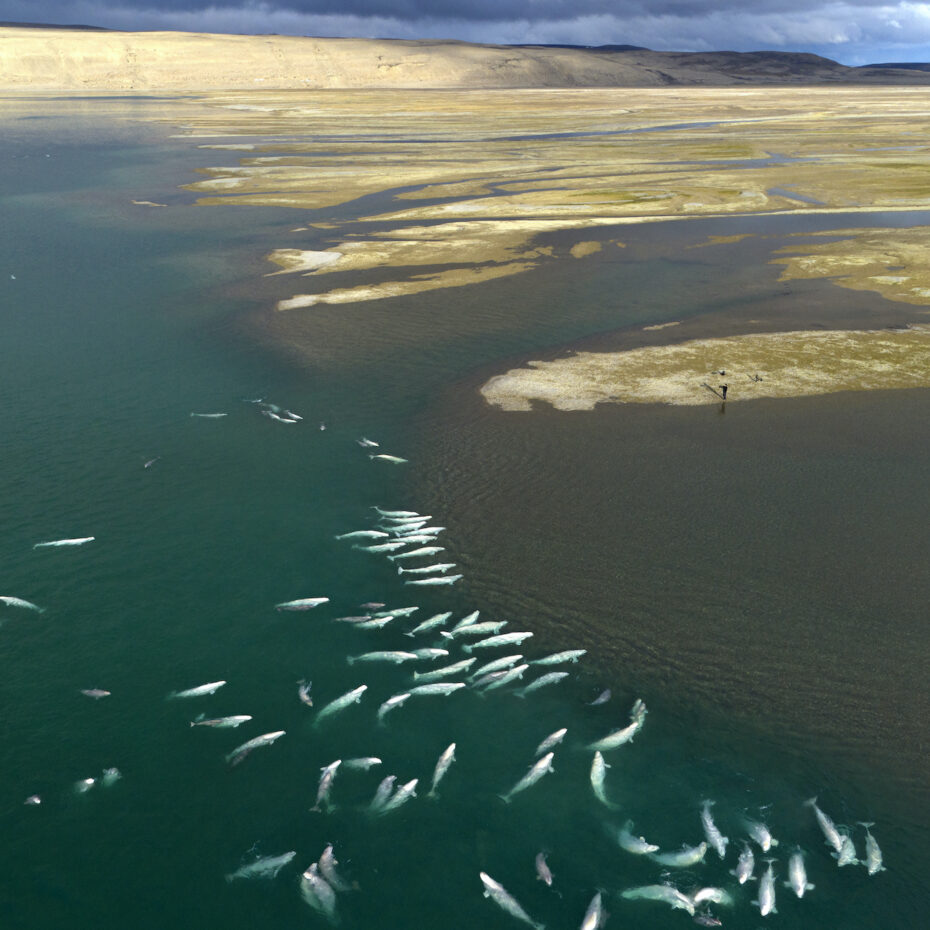
June 07, 2021 | Arctic Watch, Cunningham Inlet
BRIAN SKERRY ON SECRETS OF WHALES AT ARCTIC WATCH
“It is one of the best wildlife experiences anyone can have,” says legendary photographer and 23-year National Geographic veteran Brian Skerry about seeing beluga whales at Arctic Watch.
“It is one of the best wildlife experiences anyone can have,” says legendary ocean photographer and 23-year National Geographic veteran Brian Skerry about seeing beluga whales at Arctic Watch. “I’d heard about that place and seen pictures, but what still surprised me was how accessible the animals are. Until you experience it for yourself, it’s hard to imagine that you can just get in one of the vehicles and cross the river, and there they are. If you’re there at the right time of year, they’ll be there. If you want to see a beluga whale, I can’t imagine any better place in the world to do it.”
The hearts of those who have been to Arctic Watch are sure to beat a little quicker at the moment in episode three of Skerry’s new four-part Disney+/National Geographic documentary series Secrets of the Whales when Somerset Island’s familiar stark shores and ice-strewn waters come into view. “A special, secret location,” is how Sigourney Weaver’s narration describes Cunningham Inlet as spectacular drone footage reveals a swimming armada, hundreds of white whales converging on their annual gathering place. Here they will bask in waters warmed by the influx of the Cunningham River, socializing and giving birth and exfoliating their winter skins against the shallow gravel bottom.
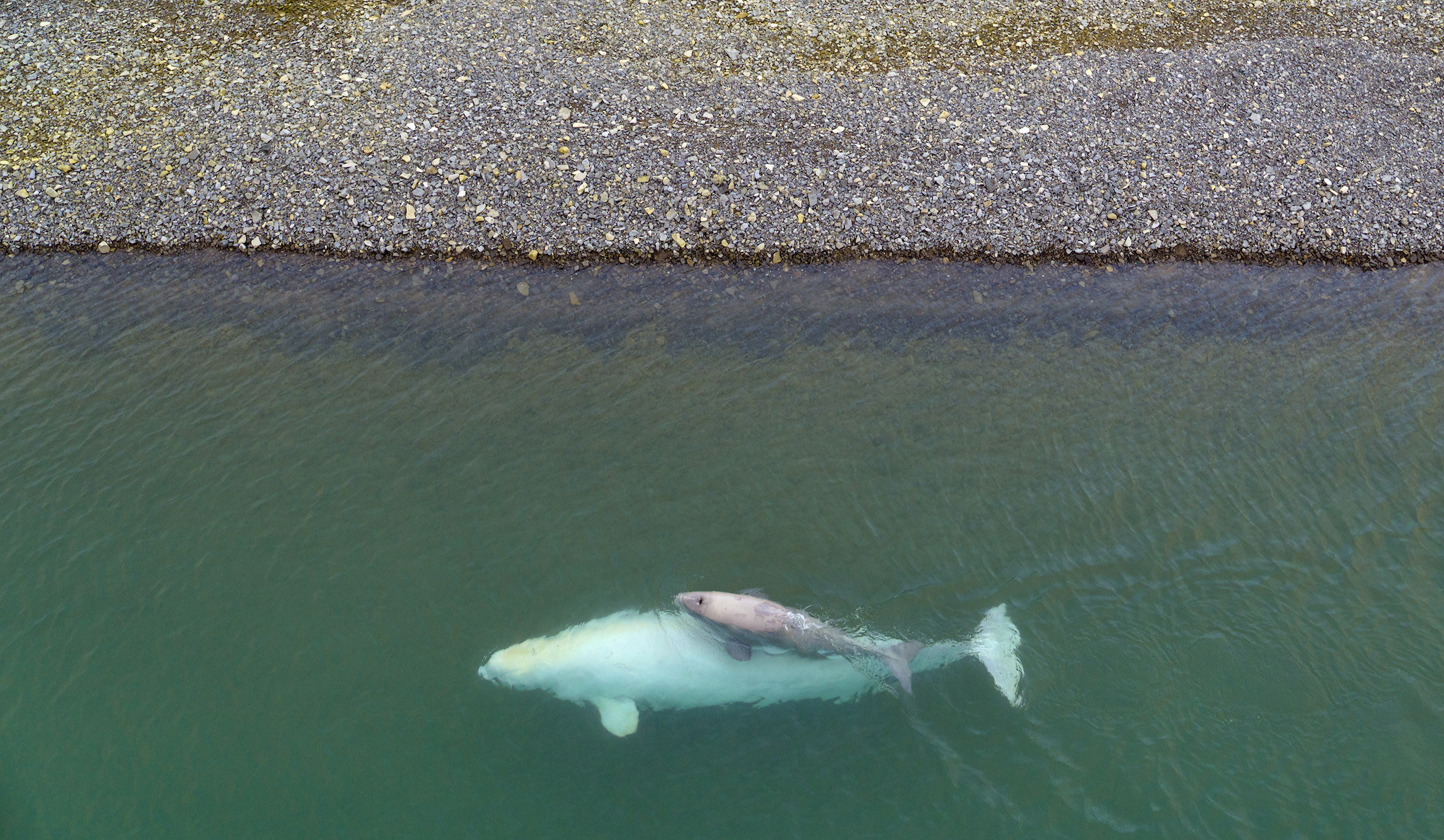
For Skerry, it was a no-brainer to choose Arctic Watch as a location for Secrets of the Whales, a daunting, grueling three-year labor of love that included not only the series (a collaboration with producer James Cameron) but a companion book and National Geographic magazine cover story. Back in 2014, finding himself without an assistant while in Nova Scotia for a shoot about bluefin tuna, he took the suggestion of fellow photographer Steve Winter and called up Nansen Weber, who was then in school in Quebec and about to take final exams. After hastily rearranging a few things, Nansen was on a plane the next day. The next year, Skerry hired Nansen again for Leonardo Dicaprio/Nat Geo's "Last Ice", and the two got talking about Cunningham Inlet and its extraordinary beluga visitors. For a while, Skerry considered doing a story just on belugas, but ultimately he decided to undertake a broader project about multiple species.
“For me,” Skerry says, “when we created Secrets of the Whales, it was the perfect confluence of the latest and greatest science that was revealing human-like traits in these charismatic animals. Without overtly being about conservation, in many ways it could be a very powerful conservation story if we could see the ocean and our relationship with nature through the lens of culture, through understanding these other animals that have rich lives and societies and ancestral traditions.” In talking about the idea of whale culture, Skerry often cites behavioral ecologist and sperm whale researcher Shane Gero, who says that behavior is what you do, and culture is how you do it. For example, most humans eat using utensils; culture determines whether we use forks or chopsticks. Analogously, whales from the same species may vocalize differently depending on region, as sperm whales do, or may choose different diets, as orcas do. Secrets of the Whales overarching concern is with the complex ways whales communicate and enact their social bonds. Watching, viewers can’t help but empathize with the animals.
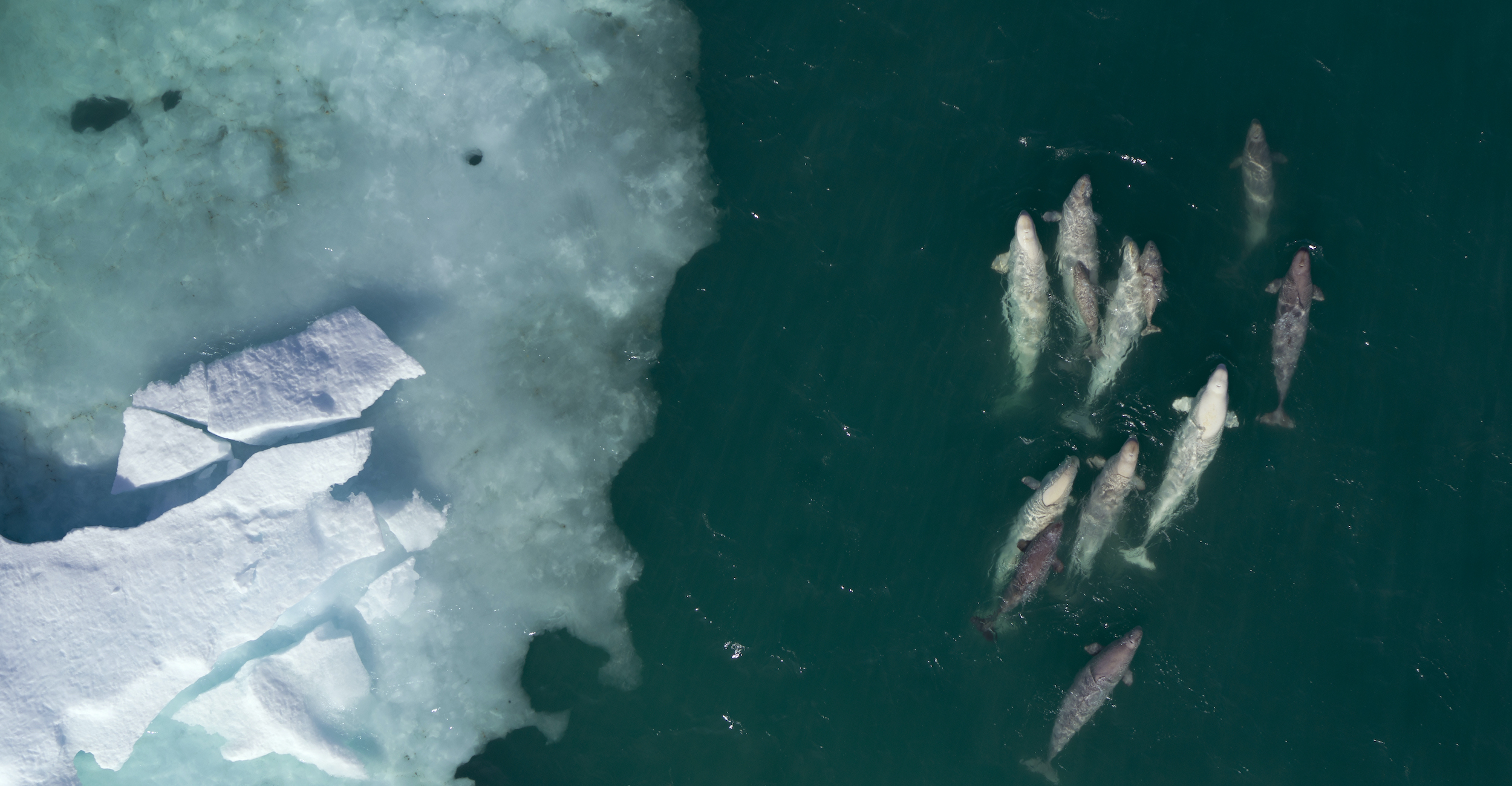
To film and photograph belugas, Skerry spent six weeks at Arctic Watch. By chance, as it’s impossible to know when the belugas will arrive, he touched down five or six days before the belugas’ first appearance, as they were still making their way across from Greenland. “From the instant I got off the plane, I felt like I was home,” he says. “The whole Weber family was warm and inviting, even the dogs. The first night you have a couple of beers out of the kegs sitting in the permafrost, you’re eating great food and looking at all the pictures and the narwhal tusks and everything on the walls—that’s all the kind of stuff that stirs my soul, that I really love.”
The headstart Skerry had on the belugas turned out to be a stroke of luck, since the technical aspects of filming underwater are anything but simple. Further complicating matters, Skerry had designed and built new remote cameras that needed a lot of troubleshooting, although the fact that remote cameras could be used at all qualifies as a minor miracle. In most ocean locations, thanks to the unpredictability of wild animals and the vastness of their habitat, remote cameras would be useless for shooting marine mammals. “But in that place,” Skerry says, “because of the river, you have a high density of animals coming in, the water is very shallow, and you’ve got this beautiful gravel bottom.” Using the lodge’s satellite internet, Skerry was in daily communication with engineers at National Geographic, who wrote new code for the cameras’ computers while Skerry and Nansen tested them underwater. Once the cameras were finally working, the team had to figure out where to place them, another task that proved challenging. “The first pictures I saw of the belugas were perfectly lit by the sun,” Skerry says, “and they were perfectly in frame, but they were blurry. Because of the mixing of fresh- and saltwater, it was like looking through Jell-O.”
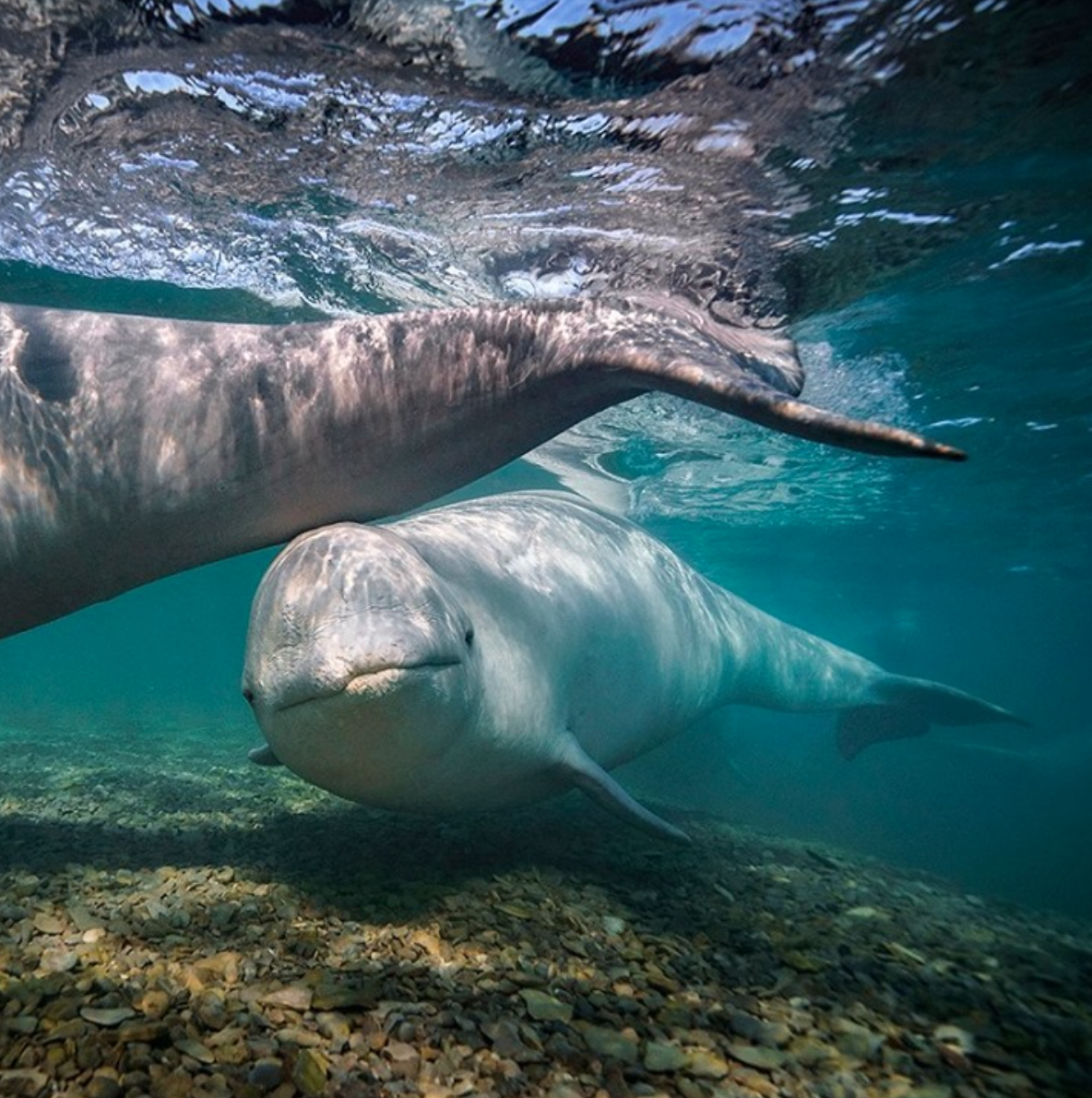
After a few more tweaks, and with a bit of luck from the tides and the unwitting cooperation of the newly arrived belugas, Skerry started to get the footage he’d been hoping for, and the team fell into a daily routine of working with the underwater cameras, shooting stills on the surface, and making use of Nansen’s skills as a drone operator. “We were just trying to chip away at the story,” Skerry says. “It was beautiful. One day blended into the next.” During periods of inclement weather, they explored on ATVs, traveling along the Northwest Passage and always looking for whales.
One thing Skerry didn’t do was get in the water with the belugas. “First of all, you aren’t allowed to,” he says. “And even if you were, I think if you put just a toe in the water, you’d get a thousand whales stampeding out of the Inlet.” One day during the shoot, a ship out in the Passage sent two small boats with outboard motors into the bay, triggering an outward stampede of around seven hundred whales. “They stayed away for about five days,” Skerry says. He sees the incident as evidence of the necessity for further protection of Arctic waters. “As we know, that ice is melting, the Arctic is changing, ship traffic will no doubt increase, and these are acoustic animals that need that peace and sanctuary.”
The cushier aspects of Weber Arctic life weren’t lost on Skerry, either. “As much as I have been with wildlife throughout my life and with whales and animals in the ocean,” he says, “I’ve never experienced anything quite like the juxtaposition of sitting next to my long lens and tripod with a picnic basket of gourmet food. You can sit on shore with a bottle of wine or a coffee and just observe. Of course, it’s light all day and night, too, so you can peek out of your tent and always see the heads bobbing out there anytime. Wildlife photography is not normally like that. It was an easy way to get spoiled for sure.”
Beluga-watchers at Arctic Watch, Skerry says, might be rewarded by trying to work out the animals’ social dynamics. As he explains, “These are fusion/fission societies. Like dolphins, they tend to morph. Sometimes there are groups of all males together, and sometimes there are moms and calves, and sometimes they all come together in a blended way, and then they separate again. Nansen would point that out to me. Sometimes you see the moms and calves closer in, and then you look offshore and see a bunch of the bigger guys spyhopping out there. You can see all of those dynamics at Arctic Watch.”
But his main piece of advice for visitors? “Just enjoy it. They are such charming animals that you never get tired of looking at them. Being on the water’s edge, being in such proximity to so many whales and hearing that cacophony of sounds they make, the clicks and whistles and chirps, is quite unlike anything else you can experience in nature. And to be in the High Arctic of Canada, in this remote place that is essentially an uninhabited island, with these animals that, for eons, have been coming to this same place, I think you are sharing in something primal and beautiful and wonderful."
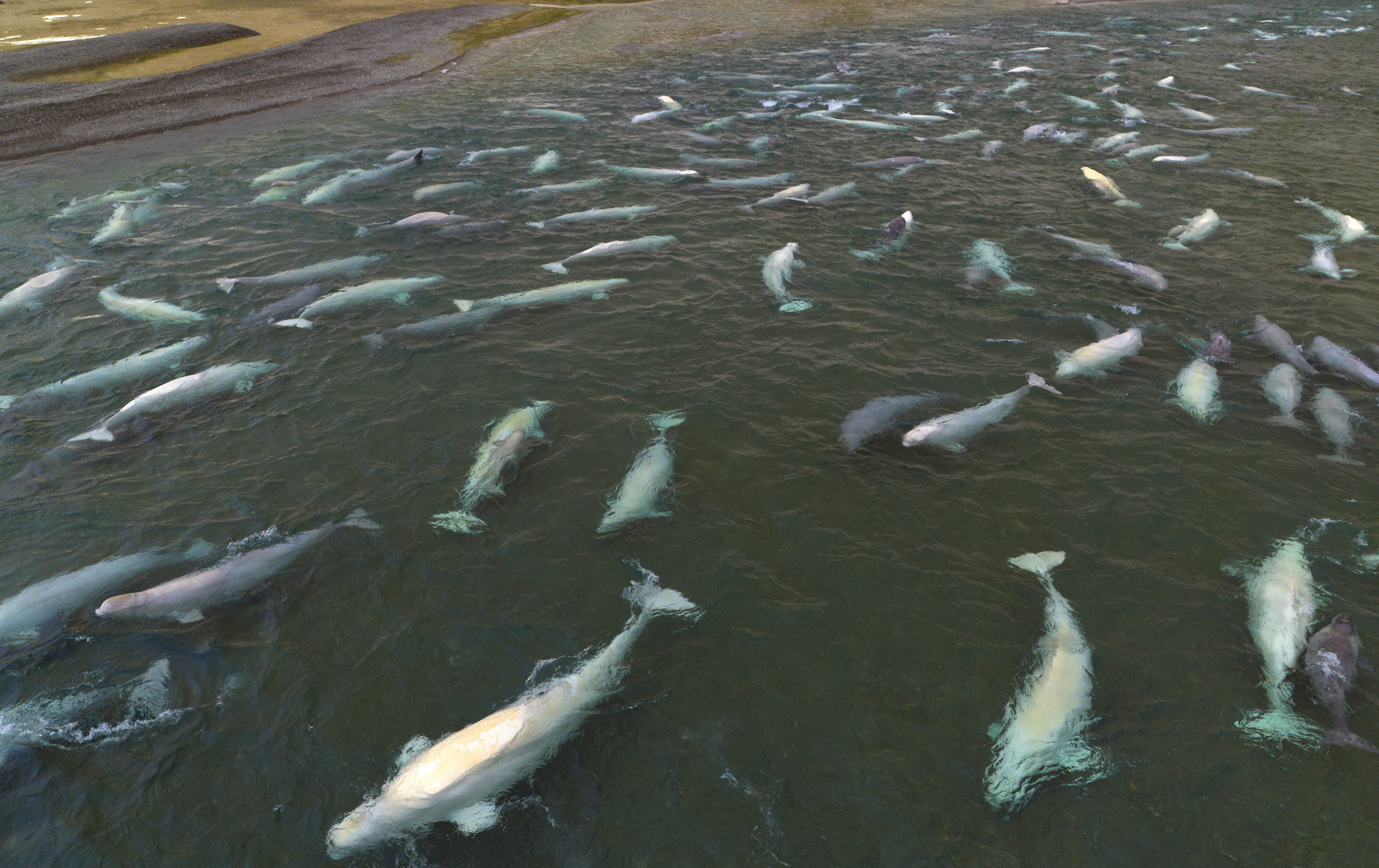
We're here to help.
We understand that booking a trip like this is a big endeavour. Please reach out to us with any questions that you might have regarding your upcoming adventure.



